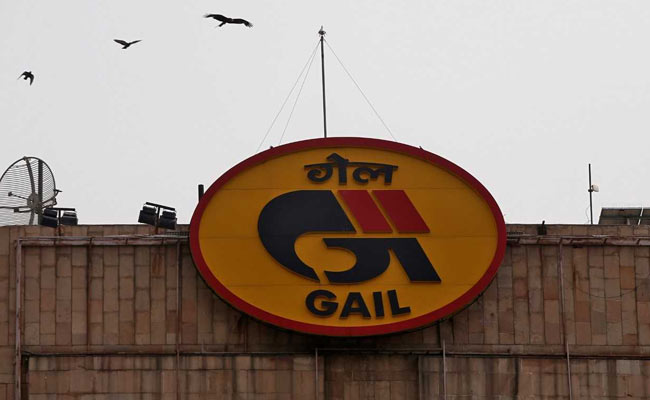GameStop Erased the Stock Market’s January Gains. February Could Be Worse.
This was alleged to be the Teflon inventory market, in a position to soak up political turmoil, a resurgent virus, and mediocre information, and carry on rising. And all it took was a brief squeeze in shares few mainstream traders care a lot about to carry on the largest decline in three months.
The S&P 500 index fell 3.3% to 3714.24 this previous week, whereas the Dow Jones Industrial Average dropped 1,014.36 factors, or 3.3%, to 29,982.62, and the Nasdaq Composite slid 3.5% to 13,070.69. All three suffered their worst drop since the week ended Oct. 30, whereas the S&P and Dow completed January down 1.4% and a pair of%, respectively.
Of course, there was extra than simply wild buying and selling for the inventory market to cope with. Investors realized that the U.S. economy had grown at a 4% clip, an honest quantity in regular occasions, however not when the financial system is making an attempt to get better from the Covid-19 carnage. The long-awaited reveal of
Johnson & Johnson’s
(ticker: JNJ) vaccine information—the one which was supposed to assist rejuvenate the reopening commerce—fell short of the market’s high expectations.
But traders had been transfixed by the surge in closely shorted shares like
GameStop
(GME) and
AMC Entertainment Holdings
(AMC), firms that had been left for lifeless however whose shares had been definitely not, because of a mob of Reddit traders.
The excellent news: The ache is prone to be short-lived.
Let’s begin with the vaccine. Expectations had been for J&J to report an efficacy fee of no less than 80%, nevertheless it got here in at simply 66%. Its inventory fell 3.6% on Friday after the information was introduced, and S&P 500 futures suffered a quick drop amid all the noise from the short-squeeze shares. Experts had been fast to defend the vaccine, nevertheless. They famous that it prevented extreme signs in 85% of sufferers, that means that even those that caught the virus had cough, sniffles, and fevers however prevented the worst outcomes, whereas reaching the similar degree in treating the more-contagious South African pressure.
“Those headline numbers may not be as impressive, but this vaccine has a role to play,” says Dave Donabedian, chief funding officer at CIBC Private Wealth Management.
That ought to be nice information for the U.S. financial system. Things—clearly—aren’t booming at the second. Fourth-quarter gross home product grew by 4%, a contact slower than the 4.2% economists had predicted, however nonetheless stable given the Covid-related shutdowns throughout the final three months of the yr. We’ll additionally get a glimpse of what January seems to be like when payrolls are launched on Feb. 5—the U.S. is anticipated to have added 150,000 jobs this previous month, up from a lack of 140,000 in December.
Growth ought to speed up in the months forward, because of the vaccines and to fiscal stimulus, which is able to nearly definitely be coming, a method or one other. Bank of America economist Michelle Meyer expects the U.S. financial system to develop at a 6% clip in 2021 and by 4.5% in 2022. Full employment is also reached by the finish of 2022, which might carry inflation to the Federal Reserve’s goal fee. And if that’s the case, Fed Chairman Jerome Powell may start elevating charges by the finish of 2023. “This would clearly be an exceptional outcome,” Meyer writes. “If all goes as planned, Chair Powell and [Treasury Secretary Janet] Yellen will be able to take a bow.”
Powell did nothing to recommend a fee improve and even the starting of a taper of bond purchases at this previous week’s Federal Open Market Committee assembly. He continued to insist the Fed will stay simple till it surpasses its focused inflation fee and job progress has recovered. The subtext: The Fed is now not counting on financial fashions to gauge when it ought to tighten financial coverage, however will attempt to use the out there information to guage the energy of the financial system.
This change has contributed to shorter-term market volatility, says Lakshman Achuthan, co-founder of the Economic Cycle Research Institute. “The Fed has given up on the framework they had and that Wall Street was following,” he says. “Now it’s a bit untethered and susceptible to the narrative.”
And what a story it has been. The GameStop quick squeeze has rapidly turn out to be a morality story of little guys taking up the man. I’d want to see it for what it truly is—a bunch of small traders have found the joys, and potential profitability, of day buying and selling in a means they haven’t since the dot-com growth and bust.
One factor merchants have to make earnings is volatility, and that’s been lacking for a few years. But it shouldn’t come as a shock that the return of day buying and selling coincides with a market that isn’t solely heading increased but in addition is doing so sharply, much like what traders skilled in 1998 and 1999. One of the issues that ended my buying and selling profession and despatched me into journalism was the lack of volatility beginning round 2003.
What’s occurring with GameStop isn’t even that new. Wall Street corporations like
Barclays
and
Jefferies
have been sending their shoppers lists of the shares which are seeing the most retail exercise. And the surge in GameStop and different closely shorted names hasn’t been all that completely different than the mania for marijuana shares in 2018, for bankrupt firms like
Hertz Global Holdings
(HTZGQ) back in June, and even the rally in electric-vehicle shares in November. The latest trades have simply caught the market’s consideration in a means the others didn’t. That’s partly as a result of traders didn’t have a lot of an “fundamental” argument for getting GameStop at $300, in the means they may for
Tilray
(TLRY)—simply consider all the marijuana it’ll promote once pot is legalized!—or the coming domination of electric vehicles.
But the different huge distinction is that institutional traders—hedge funds—had been closely quick GameStop,
BlackBerry
(BB), and the relaxation. They had assumed the companies had been dying, so the shares have to be too. “GME is a reminder not to short troubled companies at the start of an economic cycle,” writes Nicholas Colas, co-founder of DataTrek Research. “Retail investor wolf packs are new, but if you’ve ever sat on a hedge fund trading desk you know squeezing shorts has been a Wall Street blood sport for decades.”
That’s clear from the means shares that make up Wall Street’s lists of the most-shorted firms have been popping one after the other. But simply the truth quick sellers are concerned doesn’t make these shares soar the means they’ve. The lacking factor is liquidity. In August, choices merchants had been in a position to push up
Apple
(AAPL) and different FAANGs increased—Apple gained 22% throughout that month before peaking on Sept. 1—however the sheer enormity of the firms means it’s tougher for a mob of merchants to push the shares round.
Not so with GameStop and its ilk. Jefferies strategist Steven DeSanctis notes that the most-shorted shares in the small-company Russell 2000 have outperformed the least-shorted by 28.3 share factors, the largest on report. The distinction for shares in the large-cap Russell 1000 is simply 5.4 factors, solely the ninth-biggest hole since 1996. The distinction in efficiency may be defined by the decrease variety of shares in small-cap shares. “The volume is up, but liquidity down,” DeSanctis says.
But credit score ought to be given the place it is due. It may need been a mob that triggered GameStop to surge greater than 1,600% in January, however conventional traders like The Big Short’s Michael Burry, head of Scion Asset Management, together with newer ones like “DeepF—ingValue,” have been making the argument for getting the inventory for a few years now, and placing their cash to work. And these trades actually had been deep worth, requiring persistence for them to repay.
But one didn’t have to carry via the ache to see that one thing completely different was occurring with GameStop throughout the previous six months. It rose 24% on Aug. 31, when RC Ventures, managed by Ryan Cohen, first disclosed a 9% stake in the firm. It gained 22% on Sept. 16, when it began taking orders for
Sony’s
PlayStation 5. On Oct 8, it soared 44% after asserting a multiyear partnership with
Microsoft
(MSFT). The inventory traded sideways for some time however by no means got here near testing its pre-Oct. 8 lows. To a elementary analyst, the firm may need seemed lifeless in the water. To a technician, it was something however.
As for the market, it has been needing a relaxation—and it’ll most likely get one. One of the unwanted side effects of the quick squeeze is that it has pressured hedge funds to sell the stocks that they own to be able to cover their shorts. That contains ones like Apple and
Facebook
(FB), which dropped 5.1% and 5.9% this previous week, respectively, regardless of sturdy earnings reviews. The heightened market volatility additionally forces some funds to cut back their lengthy holdings as a option to cut back threat.
Though the likelihood is small, the risk of contagion is actual. And if nothing else, it’ll pressure traders to rethink what they maintain and what they need to personal for the long run. “We fully expect this kind of pullback will be a healthy buying opportunity,” says BTIG strategist Julian Emanuel. “Ringing out some of this speculation is likely to be a positive.”
The pullback comes proper on schedule. This February is the second month of the presidential cycle, and it’s normally fairly horrible, with the market averaging a 1.1% drop. Every sector has averaged a loss throughout the second month of the presidential cycle. It isn’t that each February is unhealthy—returns had been optimistic 12 occasions out of 23—it simply tends to be that means. “You should NOT assume that February of 2021 is ‘doomed’ to be a bad month for stocks,” writes Sundial Capital Research’s Jay Kaeppel. “What you DO need to recognize is that when Month 2 is ‘Good’ it is OK. And when Month 2 is bad it is often very bad.”
Hang on to your hats.
Write to Ben Levisohn at [email protected]




